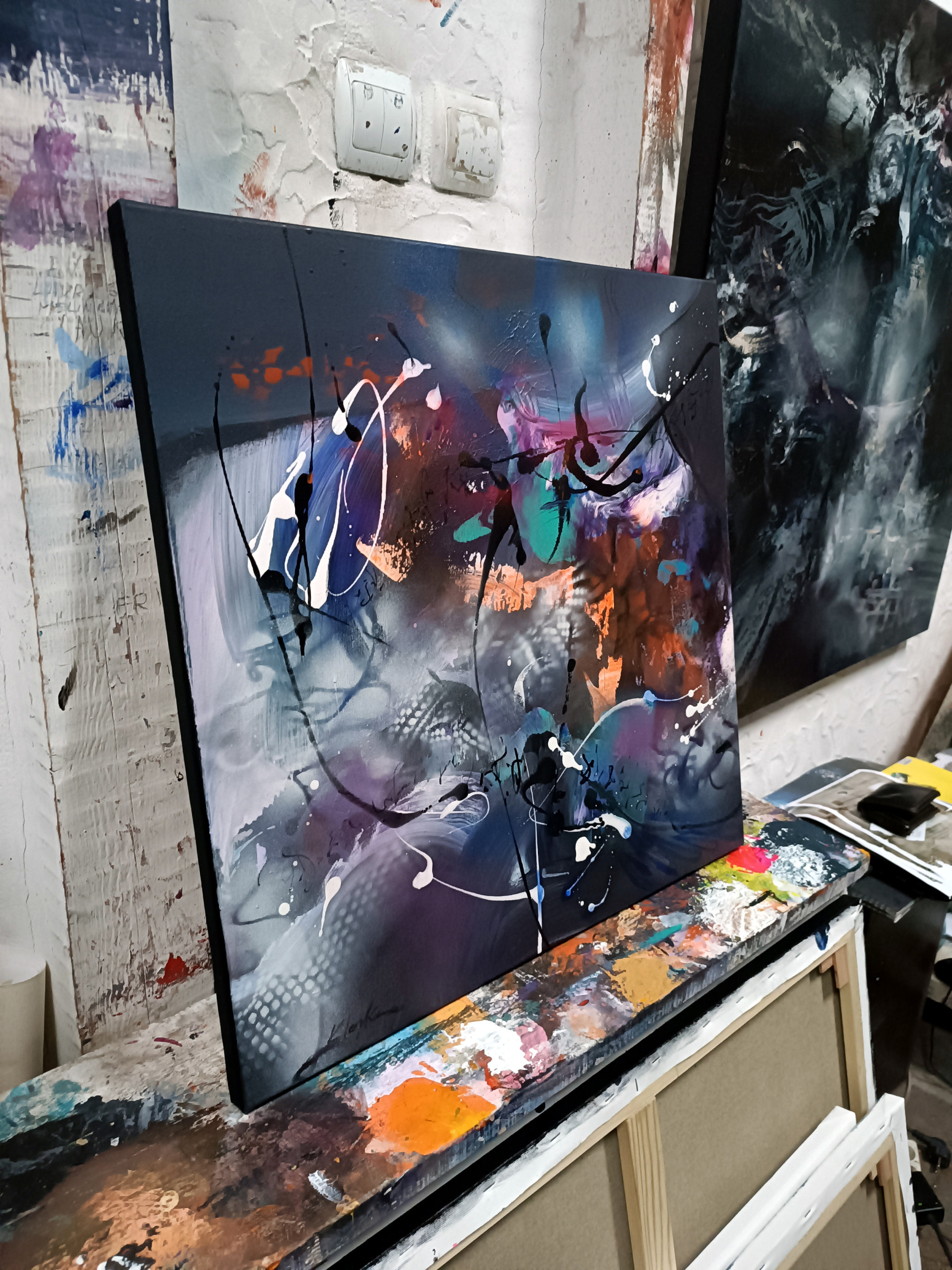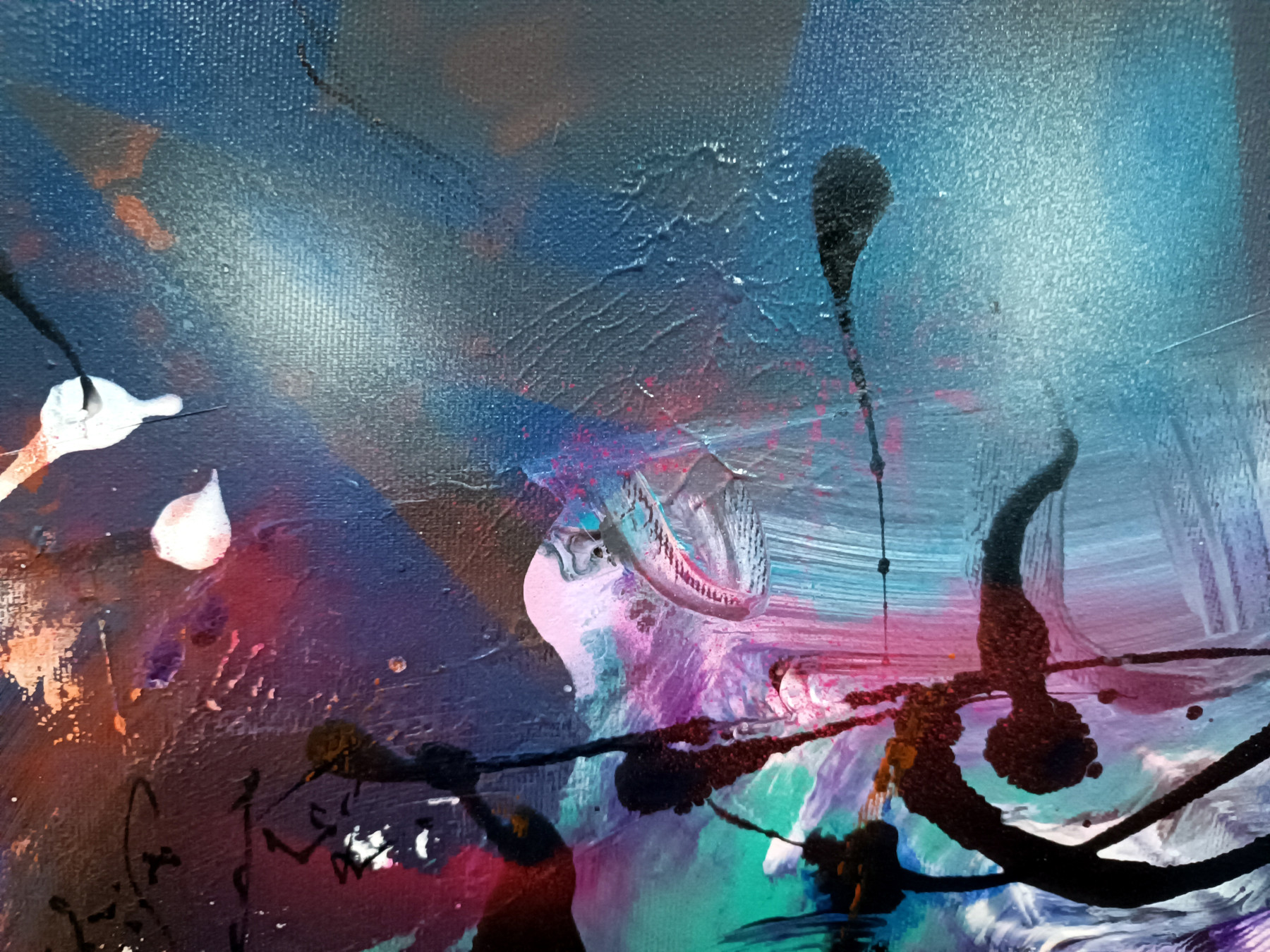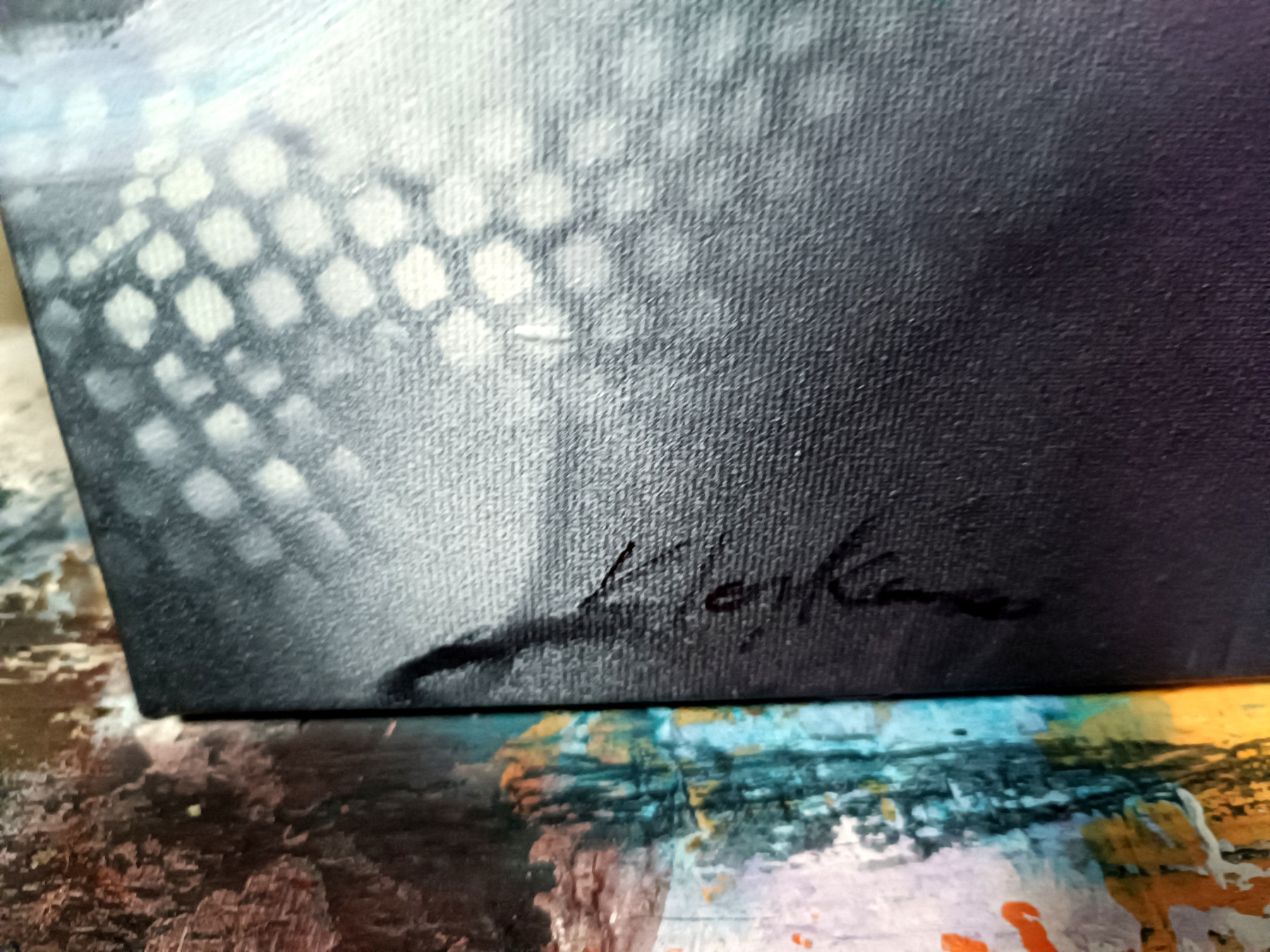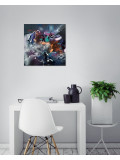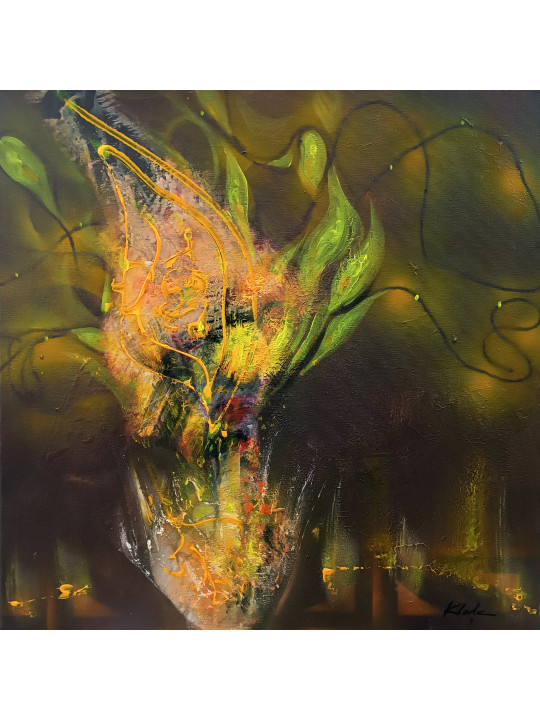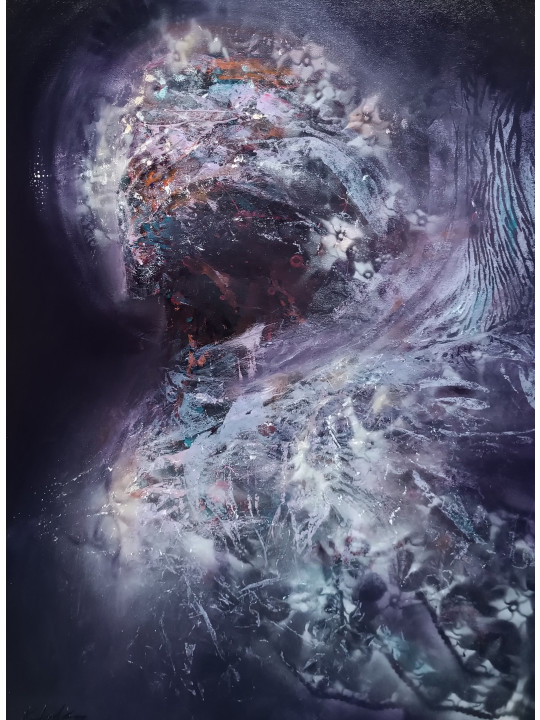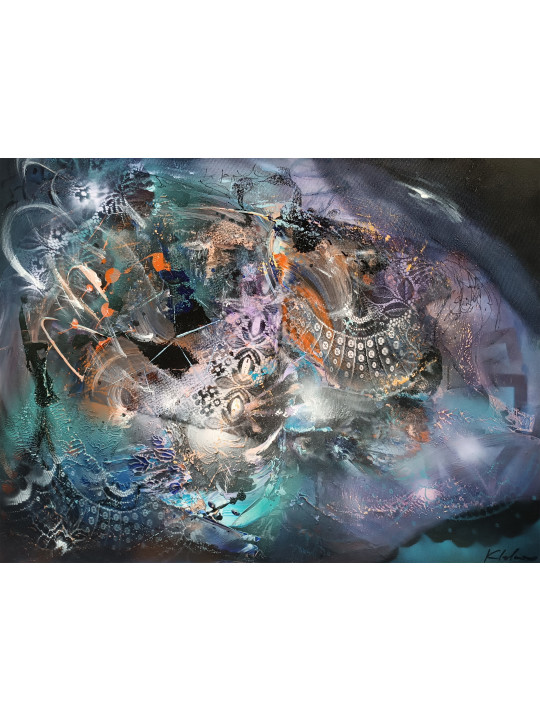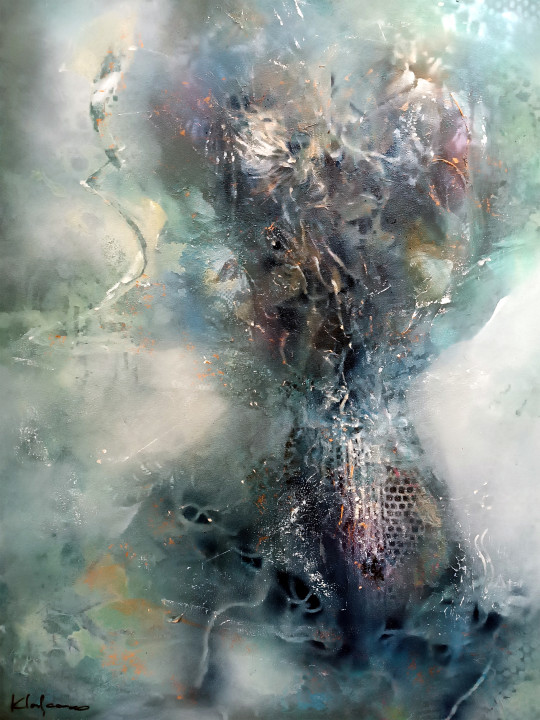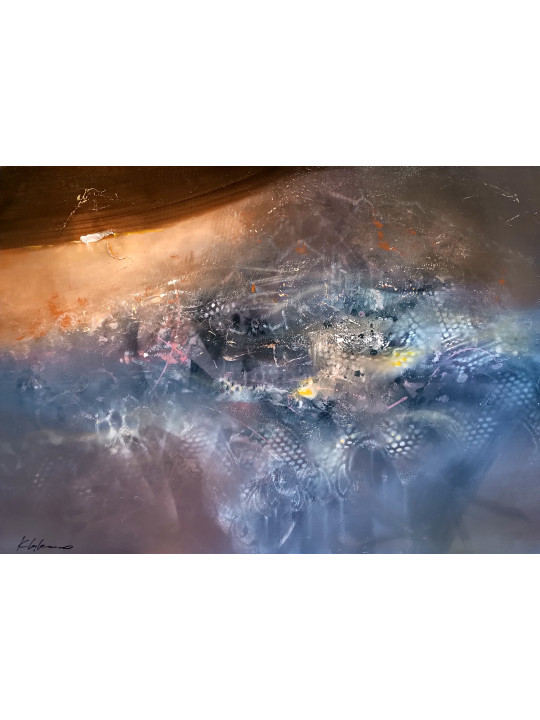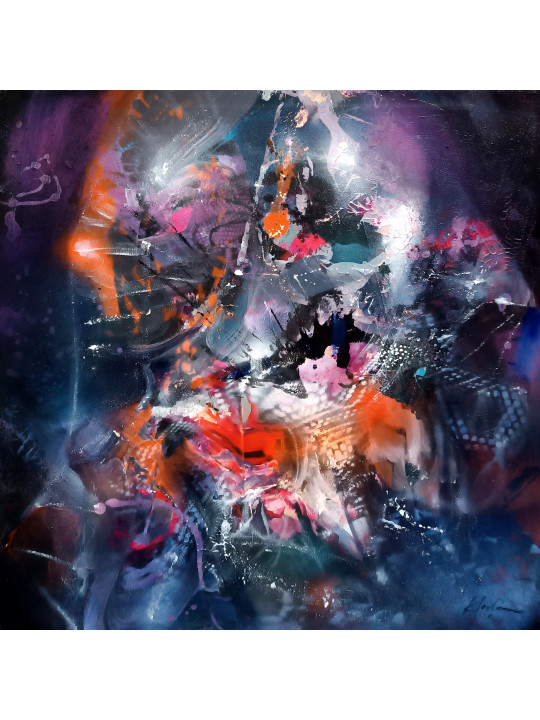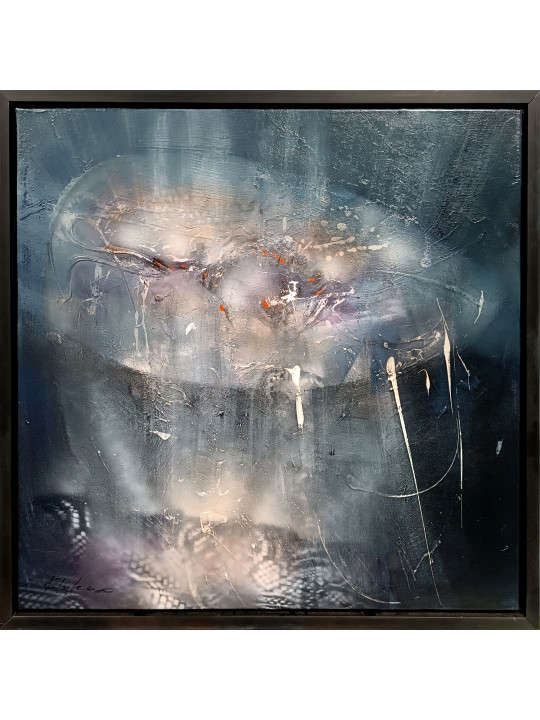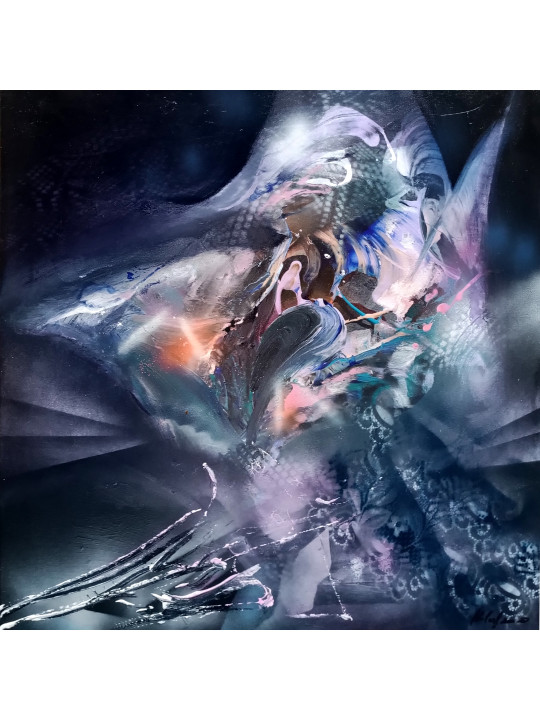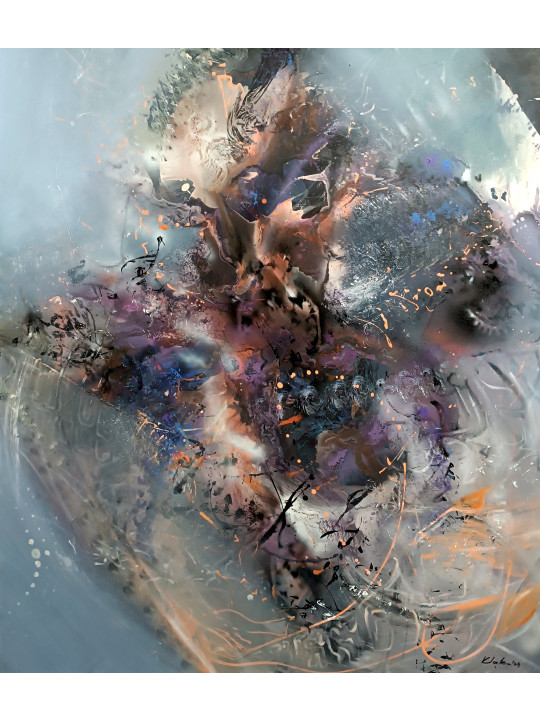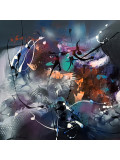
| Period | Contemporary (1945-today) |
|---|
“Composition 85 – The Map of Forgotten Echoes”
From the series “The Wonderful Morning Dreams of Alice”
Mixed media on canvas, 60 x 60 cm
Artist: Ovidiu Kloska
In Composition 85 – The Map of Forgotten Echoes, Ovidiu Kloska composes not merely a painting, but a resonant field of gestural poetics, where every mark becomes a pulse, a hesitation, or a whisper drawn from the subconscious. As part of the evocative series “The Wonderful Morning Dreams of Alice”, this work immerses the viewer in a rich interplay between motion and memory, presence and delay — an orchestration that echoes the most refined principles of contemporary gestural lyrical abstraction.
The canvas is charged with dynamic tensions: movement surges and stalls, inviting a choreography of the eye that flows and fractures in rhythm with the painter’s gestures. Black linear arcs, flicks, and splatters carve temporal paths across a background of immersive chromatic fields — their energy at times explosive, at times suspended, as if caught mid-breath. Here, gesture is not decoration, but language: a physical extension of thought, improvisation, and intuition.
The notion of delay is equally present — not as hesitation, but as emotional pacing. The surface is layered with veils and glazes that softly resist instant decoding. Passages of translucent texture slow down perception, creating visual silences between the more aggressive gestural outbursts. These silences are crucial — they are pauses in the dream, the forgotten names, the breath between thoughts.
Contrast plays a vital structural role in the work, both chromatically and formally. Volcanic bursts of burnt orange and luminous turquoise erupt from a dusk-like field of purples, greys, and midnight blues, while slick, high-gloss black drips push against matte, velvety textures. This dialogue of opposites speaks of emotional conflict — a dream’s radiant clarity clashing with the murkiness of waking logic. It is in these frictions that the lyrical tension of the work resides.
Texture, in Kloska’s hands, becomes more than surface — it becomes terrain. Stenciled elements, dripping overlays, and layered transparencies evoke sedimented memories, distant echoes, and sonic textures that emerge like signals in a fog. This tactile language connects to the material expressiveness of 21st-century abstraction — one informed by speed, technology, and digital ephemerality, yet rooted in the human hand.
What ultimately defines Composition 85 within the context of contemporary lyrical abstraction is its orchestration of contradiction: chaos and control, spontaneity and discipline, clarity and ambiguity. Rather than offering a resolved image, the painting becomes a container for emotional flux, a dream-cartography that resists closure.
This is not a picture of something. It is a state.
A field of consciousness.
A topography of what remains unspoken in the first light of morning.
Kloska’s Map of Forgotten Echoes invites us not to interpret, but to inhabit. It belongs to a visual language of reverie, rupture, and rebirth — a language that speaks most clearly when we stop listening for meaning and begin to feel for presence.
 English
English Français
Français

